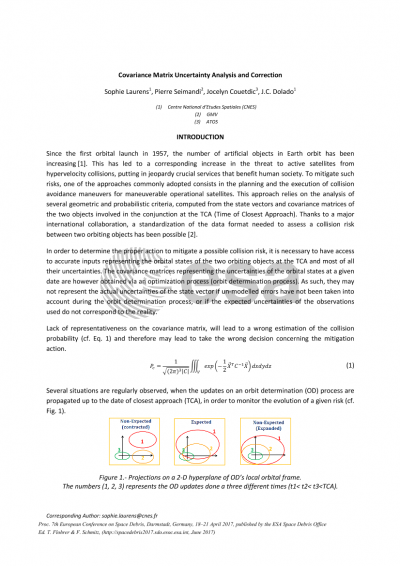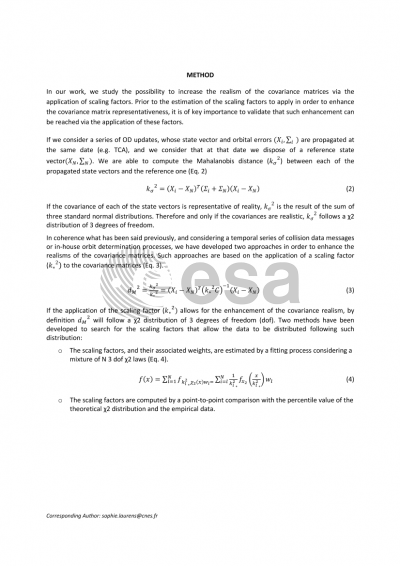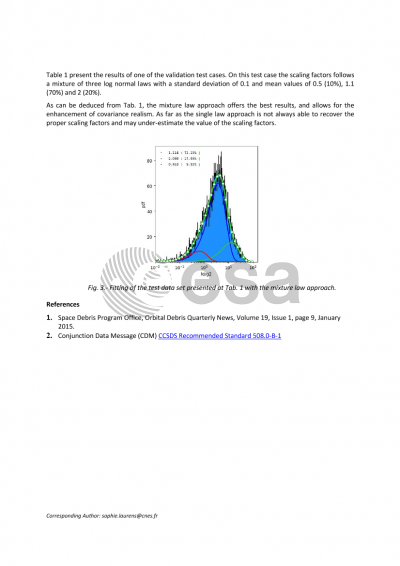Document details

Abstract
Since the first orbital launch in 1957, the number of artificial objects in Earth orbit has been increasing [1]. This has led to a corresponding increase in the threat to active satellites from hypervelocity collisions, putting in jeopardy crucial services that benefit human society. To mitigate such risks, one of the approaches commonly adopted consists in the planning and the execution of collision avoidance maneuvers for maneuverable operational satellites. This approach relies on the analysis of several geometric and probabilistic criteria, computed from the state vectors and covariance matrices of the two objects involved in the conjunction at the TCA (Time of Closest Approach). Thanks to a major international collaboration, a standardization of the data format needed to assess a collision risk between two orbiting objects has been possible [2].
In order to determine the proper action to mitigate a possible collision risk, it is necessary to have access to accurate inputs representing the orbital states of the two orbiting objects at the TCA and most of all their uncertainties. The covariance matrices representing the uncertainties of the orbital states at a given date are however obtained via an optimization process (orbit determination process). As such, they may not represent the actual uncertainties of the state vector if un-modelled errors have not been taken into account during the orbit determination process, or if the expected uncertainties of the observations used do not correspond to the reality.
In this paper, we study the possibility to increase the realism of the covariance matrices via the application of scaling factors. After proving that the realism of the state vector uncertainties can be enhanced by the sole application of these factors without changing the nature of the probability density function, we present a statistical approach to compute them. The advantage of this approach is to give the user a full insight on the dependence of these factors on variables such as covariance’s propagation time, drag perturbing acceleration, object size, ... Therefore it allows to finely tune the scaling factors according to the conjunction at hand and the available data.
References
1. Space Debris Program Office, Orbital Debris Quarterly News, Volume 19, Issue 1, page 9, January 2015.
2. Conjunction Data Message (CDM) CCSDS Recommended Standard 508.0-B-1
Preview





